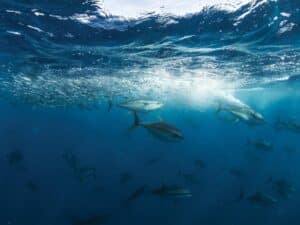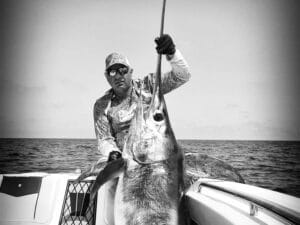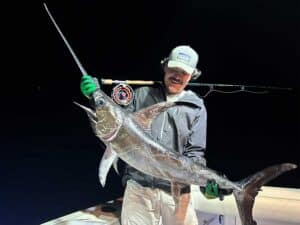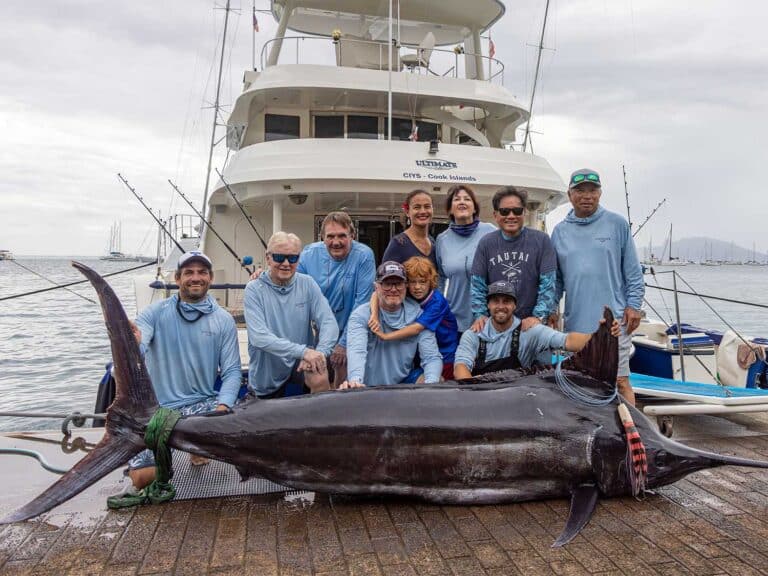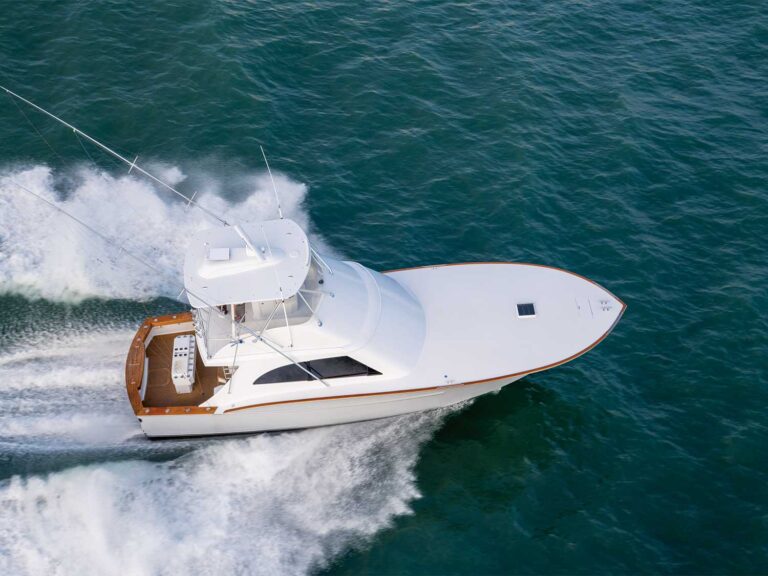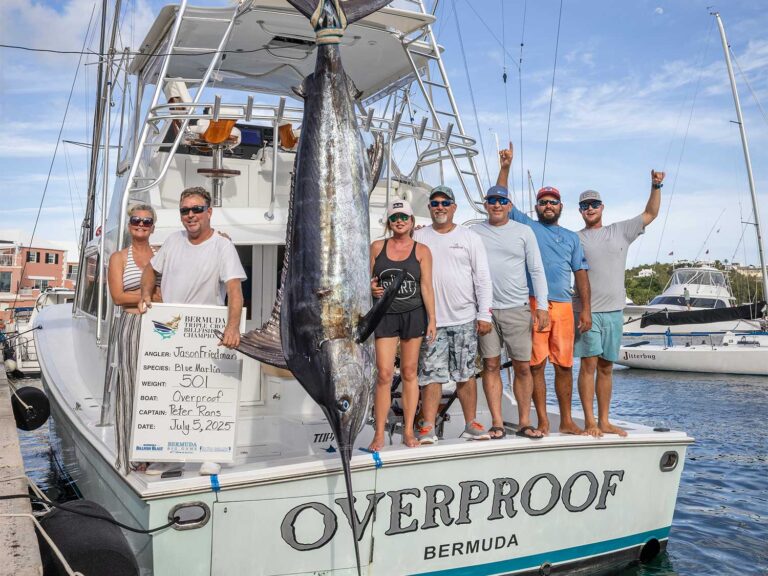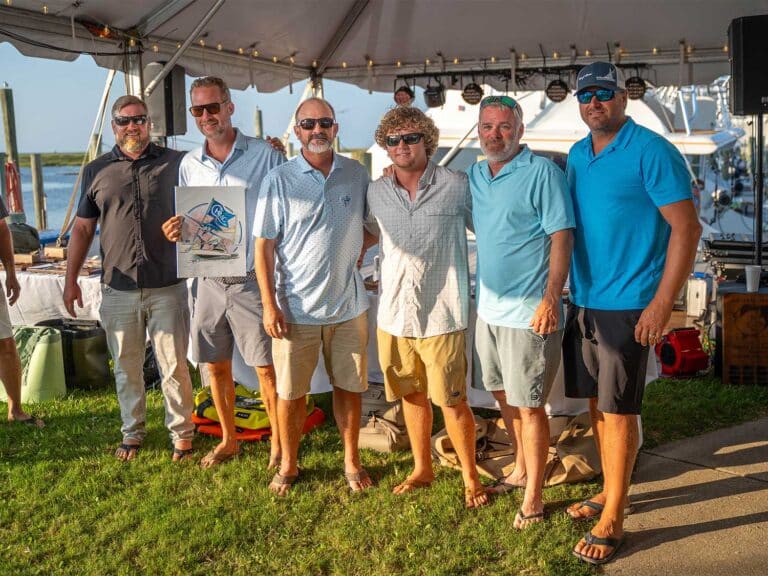
In 1982, Marlin magazine hit newsstands for the first time. Ronald Reagan had just begun his first term as president. E.T.: The Extra Terrestrial was number one at the box office. The iconic Bertram 54 was a year old, and diesel fuel was just over a buck a gallon. Mobile cellular telephones had just been introduced: They were over a foot long, weighed 2 pounds and cost almost $4,000.
Incredible changes have taken place in the sport-fishing industry since those early days, and Marlin has been there to document those innovations and share them with the world. Sport-fishing boats have become much faster, with more reliable engines and greater fuel capacity. These technological advances meant that captains and owners could explore more remote destinations, which often meant better fishing.
Improvements in electronics assisted in travel and finding fish, making things not only more successful but much safer. With the introduction of better tackle, anglers could use lighter lines and stand-up techniques in places like Venezuela and Costa Rica, and soon they were bringing these techniques to their home waters. As catch rates soared, the pendulum swung toward the side of conservation, with forward-thinking anglers and captains realizing the need to not only release more billfish but also to learn more about their migratory patterns.
Whether it’s the boats and engines, electronics, tackle or even the personalities and the destinations where we fish, Marlin‘s covered it all. Let’s see just how far we’ve come in the last 35 years.
Fiberglass, Wood and Iron
Throughout the 1980s and ’90s, the Big Three — Bertram, Hatteras and Viking — dominated the production boatbuilding scene, although others like Post, Ocean Yachts, Striker and Cabo vied for their share of a crowded marketplace. Custom builders really came on strong too, with historic names like Merritt, Rybovich, Garlington, Whiticar, Buddy Davis, Omie Tillett and others producing boats that were purpose-built for chasing blue marlin and giant bluefin tuna.

Over the years, the rise of technology allowed boats to become lighter, faster and more fuel-efficient. Builders began using composite materials and construction techniques like vacuum-bagging to reduce weight. Engines grew in horsepower while also becoming lighter and smaller. Computer-aided design and construction led to improved engineering and performance. These days, it’s entirely possible the 80-footer in the slip next to you could be powered by a pair of 2,600 hp engines and have a top speed of over 40 knots. Buddy Davis would be very impressed.
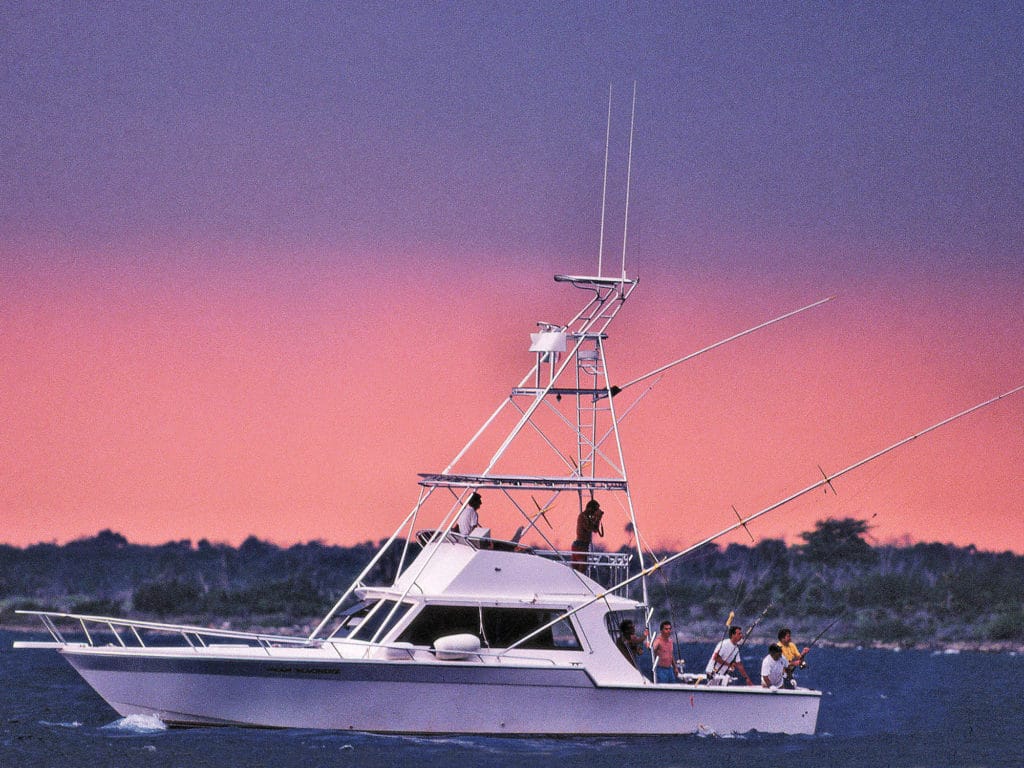
Hit the Road for Great Fishing
Since the days of Hemingway, and even Zane Grey before him, big-game fishermen have always traveled to find the hot bite. In the early 1980s, those destinations were quite a bit different from the way they are today.In 1984, Escapade caught over 1,000 billfish in a season, starting in South Florida before moving on to Cozumel, St. Thomas and Venezuela, which we recapped in a feature titled “Venezuela: A Billfish Bonanza” [Winter 84/85]. In the ’80s, a new guard had taken over the U.S. Virgin Islands Open Atlantic Blue Marlin Tournament in St. Thomas, making it one of the most popular events in a growing Caribbean tournament circuit that also included the Club Nautico de San Juan International in Puerto Rico.
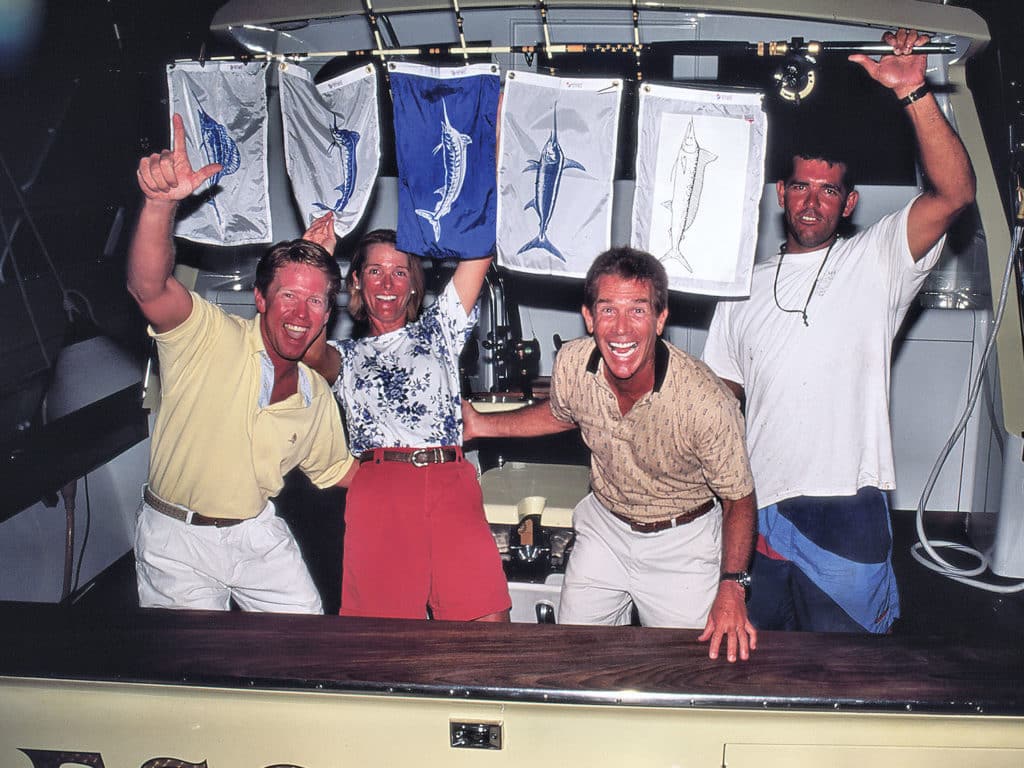
A bit closer to home, Walker’s Cay and Bimini hosted big-money tournaments and were wall-to-wall with sport-fishing boats for most of the spring and summer. Many young captains cut their teeth on Bahamian blue marlin as well as bluefin tuna off Cat Cay’s famed Tuna Alley in the 1980s and ’90s.Today, much has changed. A tenuous political situation has removed Venezuela from the travel plans of all but the most intrepid anglers. Cuba has recently become more accessible to visitors, hosting a large American contingent for the Hemingway International Billfishing Tournament this year.

Game boats can also be shipped all over the world, either as deck cargo aboard container ships or aboard specially designed yacht transporters, something we first touched on first in November 1993 in the “Expand Your Horizons.” Whether it’s the Azores, Bom Bom, Cape Verde or the far reaches of the western Pacific, seemingly nowhere is out of reach these days. Spin the globe, pick a destination and it’s entirely possible to make it happen.
Tech Changes
We could write an entire magazine on the changes in electronics, starting when we transitioned to GPS for navigation and said goodbye to loran [March 2010]. We have also seen advancements in satellite technology for communication as well as locating productive fishing areas. We documented the emergence of the first color sounders [“Big Game Fishing Enters the Electronic Age,” Summer 1985] and the milestone of integrating sonar into plotters.

More recently, we’ve highlighted both chirp and side-scanning sonar technology, forever changing the imaging potential below the water and the way we locate fish. The advancements in pulse-compression radar are a far cry from the early versions produced by Koden, Si-Tex and Raytheon from the early ’90s. A look at the helm of today’s battlewagons will note some of the biggest differences: high-powered all-glass multifunction displays that seamlessly integrate different components through black-box systems. Check out the electronics photos and ads in the old issues of Marlin and you are sure to think to yourself: “Wow, I remember those days. How did we ever manage without it?”
Changing the Way We Fish
Tackle has seen some of the most interesting innovations in the industry. Most of the gear we use remains remarkably similar, while some continues to evolve to meet the changing interests and needs of anglers around the world. Penn introduced the International II two-speed line of reels [Winter 84/85] with the phrase, “A New Standard for the World!” And they were absolutely correct — with only slight changes since the reel’s debut, the Penn International continues to fight big marlin around the world, claiming scores of world records and tournament victories.
The debut of the Shimano Triton Lever Drag hit the pages of Marlin [April/May 1987] and forever marked a change for trolling reels. The little brother to the Triton Trolling Series reel at the time, the TLD highlighted its new technology in an advertisement slogan proclaiming, “Four — count ’em four — stainless steel ball bearings to take the stress of hard-hitting, long-running game fish.” And while TLDs are still the weapon of choice for many top-notch offshore anglers, Shimano’s Talica and Tiagra series of trolling reels now feature six shielded ball bearings in addition to other advancements that make the gears and body lighter and stronger than ever before.
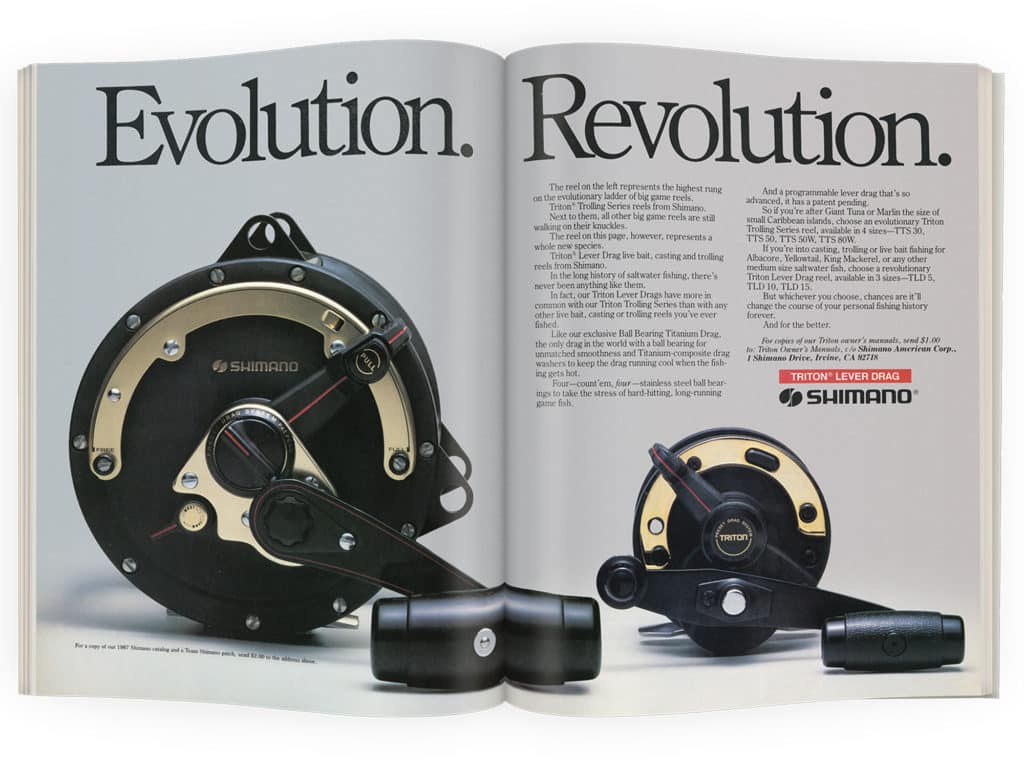
The way in which we fish has changed as well. By the early 1980s, the famed Hawaiian Eye lure had gained a tremendous following. We reported in the “Top 10 Marlin Lures of All Time” [July 2007], “The legendary Ilander, or Hawaiian Eye as it was originally known, has probably caught twice as many blue marlin on the Atlantic Coast as its nearest competitor. The Ilander accounted for several innovations that can be found on many lures today: It was the first true high-speed trolling lure, the first to have permanent nylon skirts and the first to use realistic eyes.” Boats were pulling fender teasers, bowling pins, chains of shiny compact discs and basically anything else they felt could raise an inquisitive blue marlin.
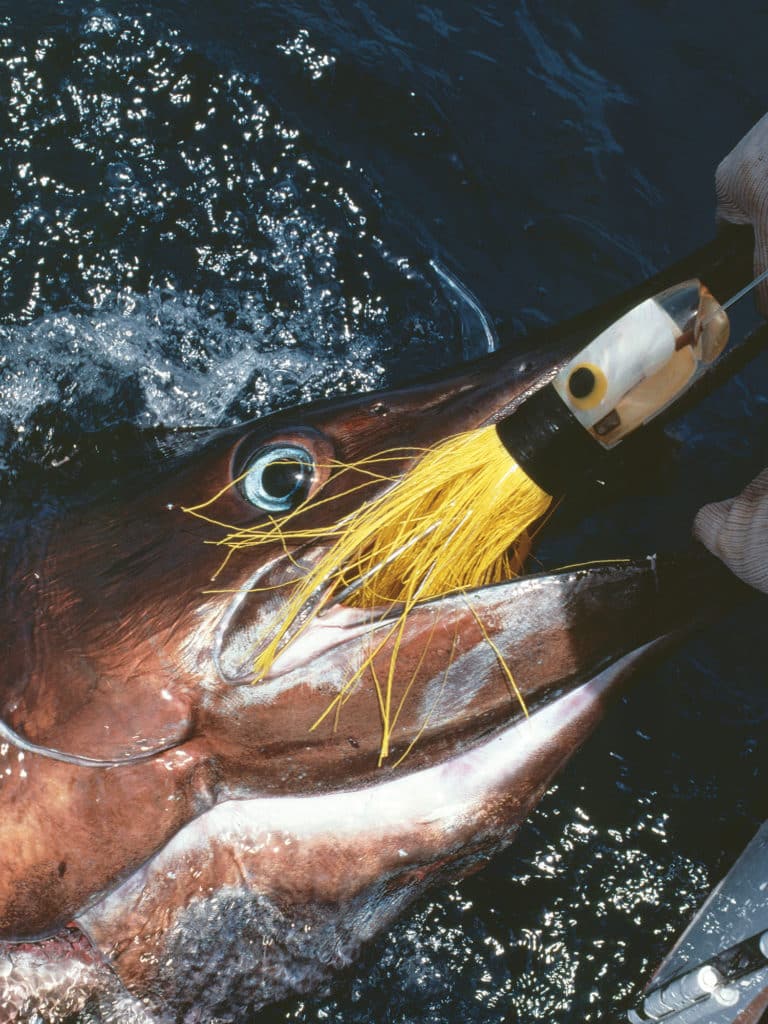
The rise of dredge-fishing changed most of that, which we discussed in September 2000 in a feature titled “Get the Dredge Edge.” Tournament competitors found these multi-armed wonders consistently raised more marlin and sailfish. Today, it’s hard to find a team that doesn’t have at least one dredge in the water.
Conservation Efforts
Marlin also documented the rise of the billfish conservation ethic among big-game fishermen. An ad sponsored by Frank Murray in the October/November 1986 issue depicted a wanted poster garnering the support for anglers to release baby blue marlin. And while he encouraged the release of all blue marlin under 200 pounds, we saw the beginnings of the conservation effort within our community and the roots from which it has grown over the last 30-plus years. Many tournaments now require a 500-pound minimum and fish to be at least 110 inches, while other tournaments have shifted to either modified- or all-release formats. We’ve also seen the rise of the circle hook that was first introduced by Capt. Ron Hamlin in Guatemala and documented in the March 1997 issue [“Extensive Study Showed Released Fish Survive.”] We have witnessed the paradigm shift that occurred when anglers and captains found them to be more effective, as well as a conservation tool to help decrease the post-release mortality of billfish.
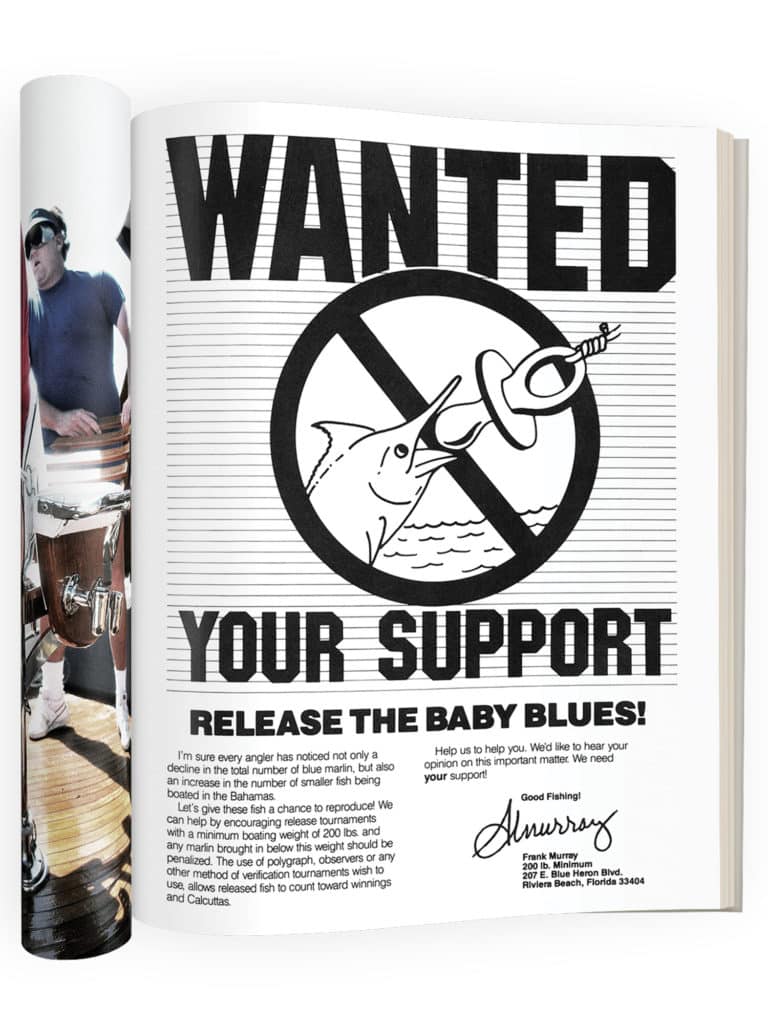
In that same October/November 1986 issue, we highlighted the formation of The Billfish Foundation. During the initial meeting in August 1986, Winthrop Rockefeller said, “Our purpose is to fund the research that must be the basis for planned management to prevent the overexploitation or destruction of the sea’s billfish stocks.” Celebrating their 30th anniversary this year, TBF continues to fight for the global conservation of billfish. In one of the foundation’s first ads in the April/May 1987 issue, a graphic shows a picture of a marlin fading away over the years, with the headline, “How many will there be in 2001?” And while TBF still faces challenges today, a lot of our successes in recent years with high catch rates can be attributed to the foundation’s tireless efforts.
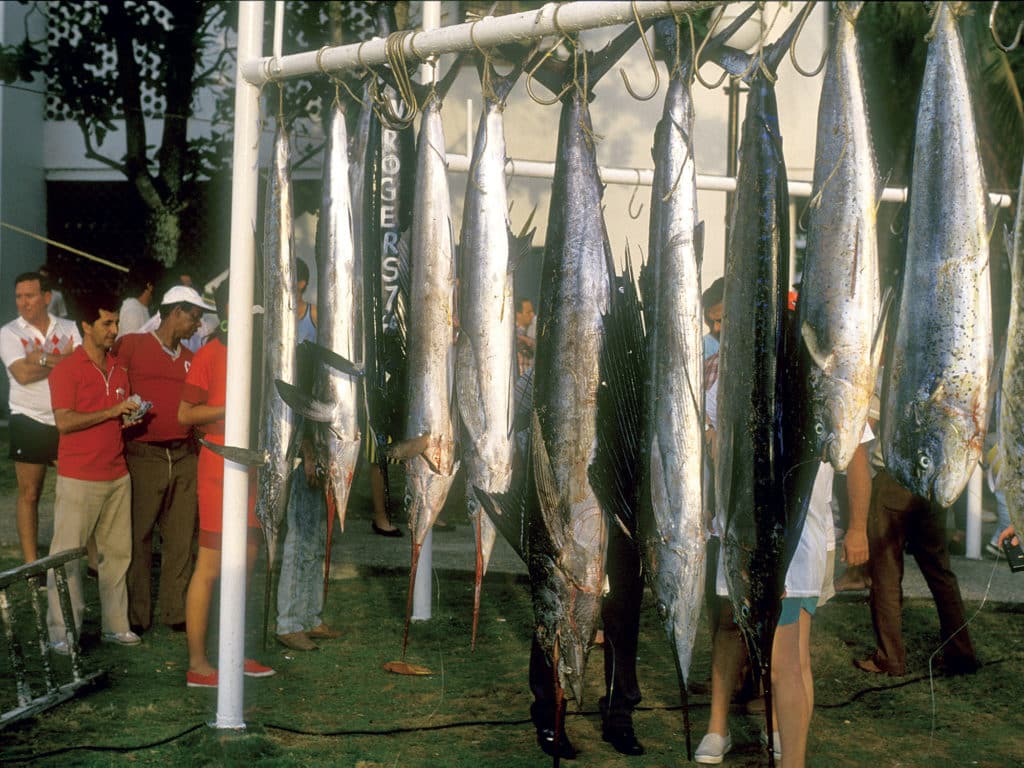
Tying It All Together
While much has changed over the last three and a half decades, the only constant is change. We have better polarized sunglasses and better sun-protection clothing. The boats will continue to get faster, the electronics more powerful and the tackle lighter and stronger. There are still unexplored hot spots in the world, but even the old favorites are still producing great fishing. What else remains constant? The passion and dedication of those who pursue the world’s toughest game fish.
And you can bet Marlin magazine will be there to cover it all.

